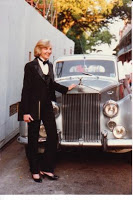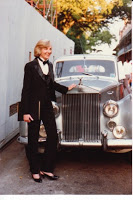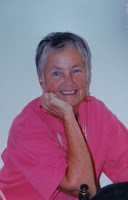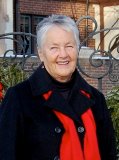For me, being gay has had everything to do with my spiritual journey. As you already know from prior stories, I was born a Methodist Christian and I was also born gay, and 27 years later those two things would come into great conflict with each other.
Growing up in the church I truly believed in Christianity, mainly because of the music associated with it. I sang in all the church choirs and felt as though I actually experienced the presence of God through the music. The last verse to one of the hymns we sang expresses the extent of my commitment:
“Were the whole realm of nature mine, That were an offering far too small.
Love so amazing, so divine, Demands my life, my soul, my all.”
So it was off to SMU to major in sacred music and become a minister of music in 1963 at a large Methodist church in Houston. Since SMU and Perkins School of Theology was a liberal college, I became a liberal Christian.
However, in my second year of graduate school I had come out to myself and had my first sexual experience with another woman. I had been in love with a couple of other girls in junior high and high school, but had not acted on it in any way, even though I wanted to more than anything in the world. Still, I waited ten years after my first crush to actually kiss another woman, and all of the fireworks went off. It was finally everything I had imagined and hoped for. I knew that I was a homosexual and I did not want to be one, because it was not accepted at the time and it seemed to be anathema to my chosen profession.
Simultaneously with starting to work at the church, I also started psychotherapy to try to be “cured” of my homosexuality, but the therapist that I had was very informed and instead helped me to accept myself as I am.
The fourth year of my job at Chapelwood in Houston was an extremely chaotic one emotionally. One of the women in my choir who was also single and who was my same age, 27, approached me and we began to have a very brief affair. As it turned out, she was the preacher’s mistress, and she told him about me and me about him. One of us had to go, and of course, it was me, since I was the woman and I was the gay one, and he was the man and straight, even though he was married and having an affair with a woman in his church which had been going on for years.
Leaving that church was the most difficult time of my life, since I was out on the street with two worthless masters degrees, no job, no profession, no friends, no money, and nowhere to turn. Spiritually speaking, I knew that I was okay with God, but I was not okay with the church.
I went to a gay bar, met another woman that I stayed with for eleven years, spent five years trying to settle in another profession, and had thirteen years of no spirituality at all.
In 1980 I became involved with PFLAG Denver, where I met Bishop Wheatley and his wife. Mel Wheatley said, “PFLAG is what church ought to be.” I will never forget that. It was a place where we observed and practiced unconditional love.
About that same time I started going to Mile Hi Church of Religious Science, where I learned the difference between spirituality and religion. They seemed to accept gay people as we were, and I felt once again that I had a community to belong to where I learned meditation and positive thinking and felt that I had re-established a relationship with God.
After about ten years of that, I realized that Science of Mind was just not true for me anymore, and stopped going to that church.
I had read a lot of spiritual books, but then I began reading Ken Wilber, a brilliant philosopher who lived in Denver, and I was truly struck by his philosophy, particularly Spiral Dynamics, and the spirituality that they talked about and espoused, Integral Spirituality, which was more similar to Buddhism but incorporated things from all the religions with meditation and mysticism. Being gay was not an issue at all.
I attended an Integral workshop and joined a Ken Wilber meetup group, where I found a spiritual home for about five years.
Since then, I have drifted away from that group and now — well, now I have no spiritual life or meditation practice or community. Now I am just going along with life and trying to be open to whatever might come next.
We shall see what happens.
© 2015
About the Author
I was born in Louisiana in 1939, went to Southern Methodist University in Dallas from 1957 through 1963, with majors in sacred music and choral conducting, was a minister of music for a large Methodist church in Houston for four years, and was fired for being gay in 1967. After five years of searching, I settled in Denver and spent 30 years here as a freelance court reporter. From 1980 forward I have been involved with PFLAG Denver, and started and conducted four GLBT choruses: the PFLAG Festival Chorus, the Denver Women’s Chorus, the Celebration ’90 Festival Chorus for the Gay Games in Vancouver, and Harmony. I am enjoying my 11-year retirement with my life partner of 32 years, Judith Nelson, riding our bikes, going to concerts, and writing stories for the great SAGE group.




